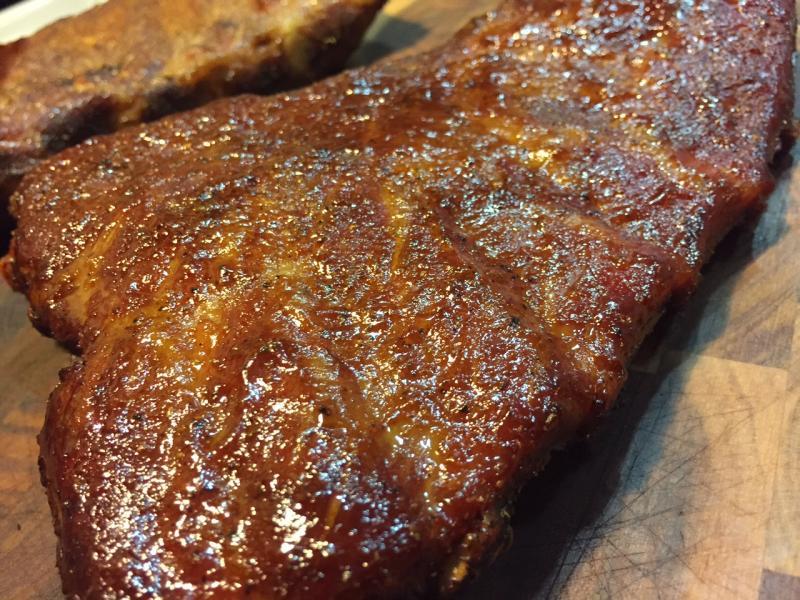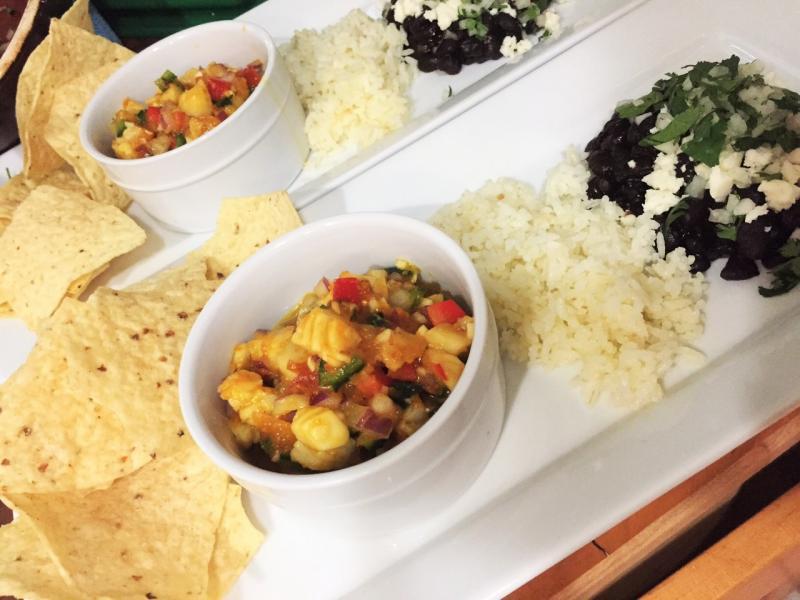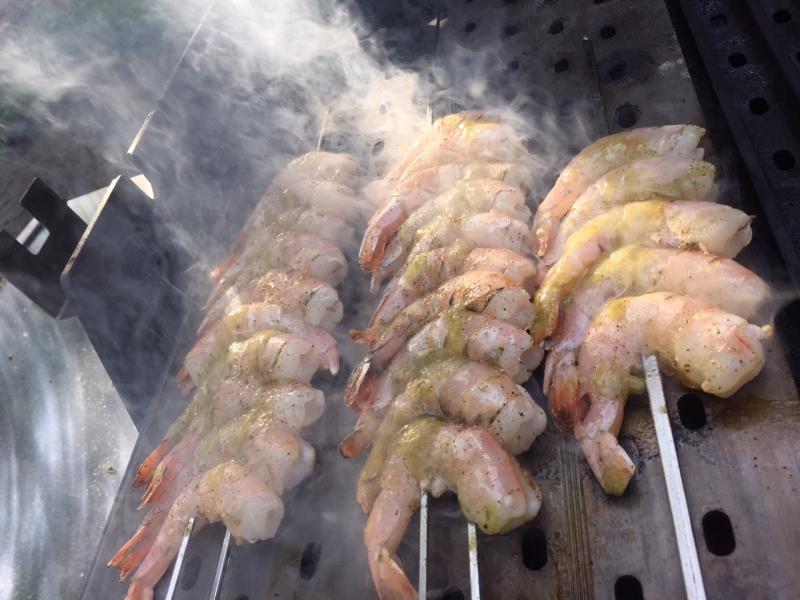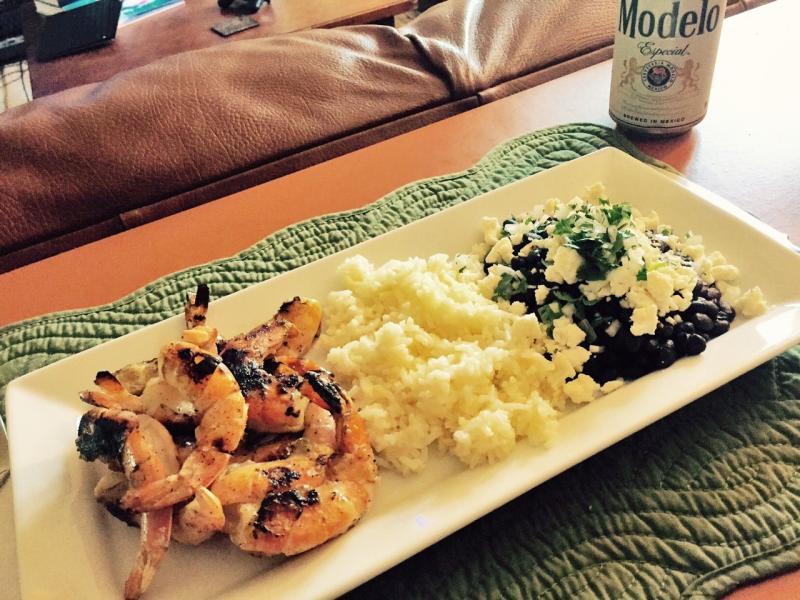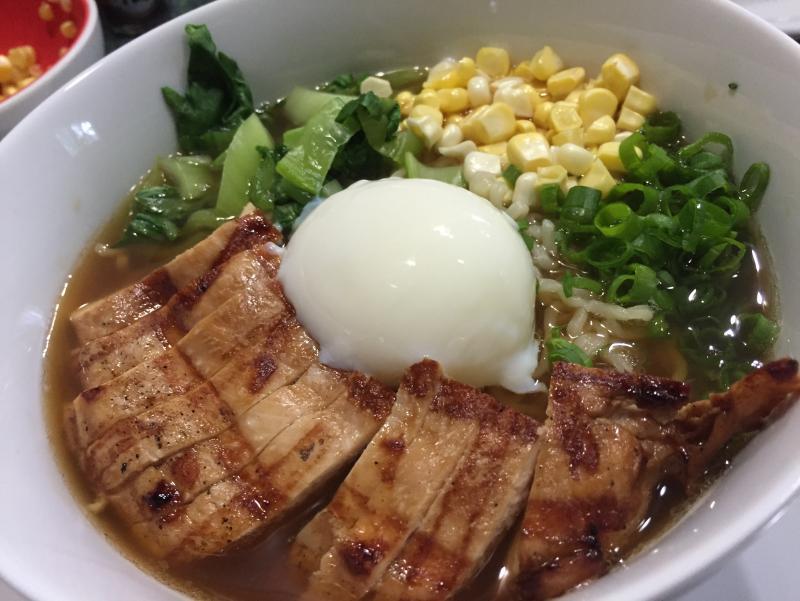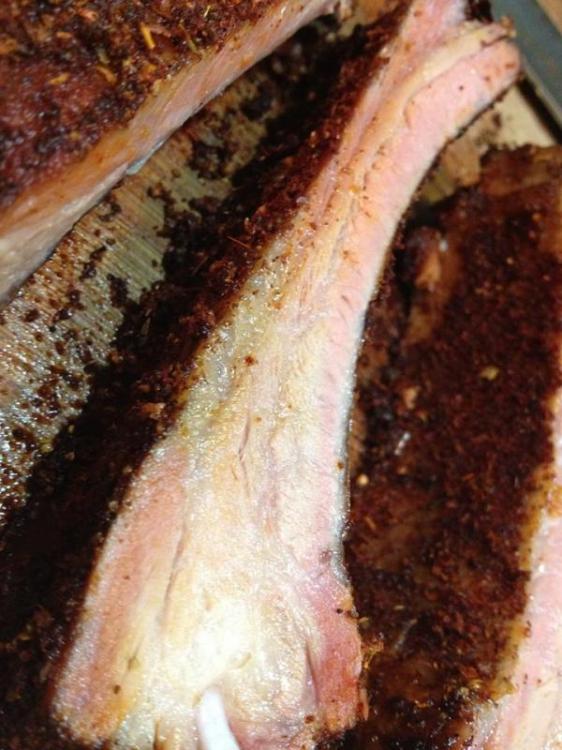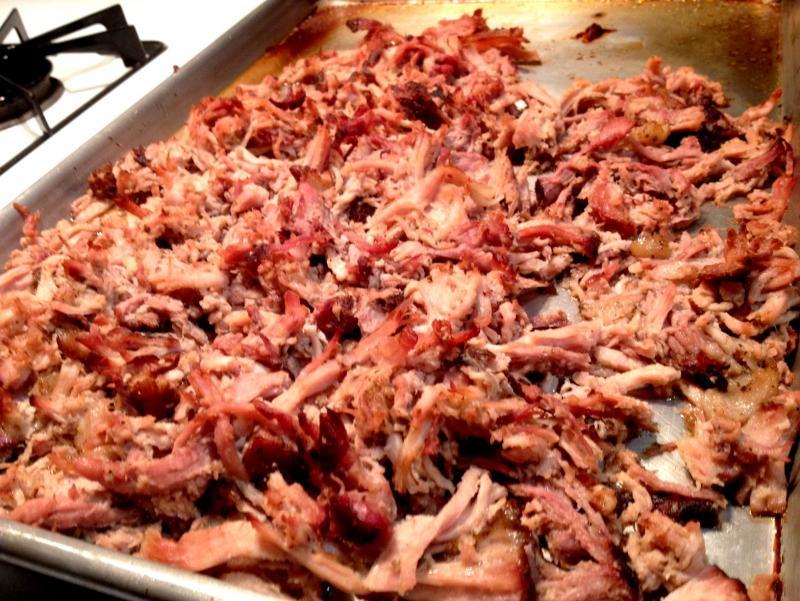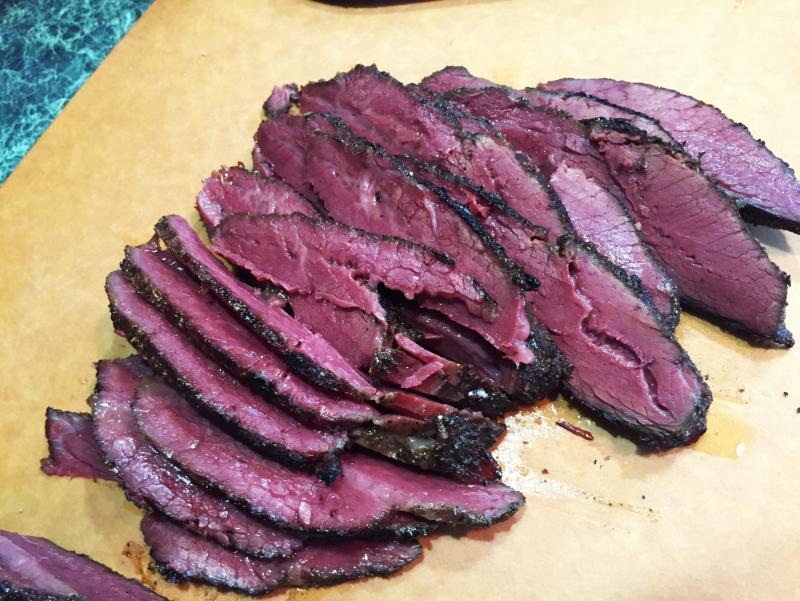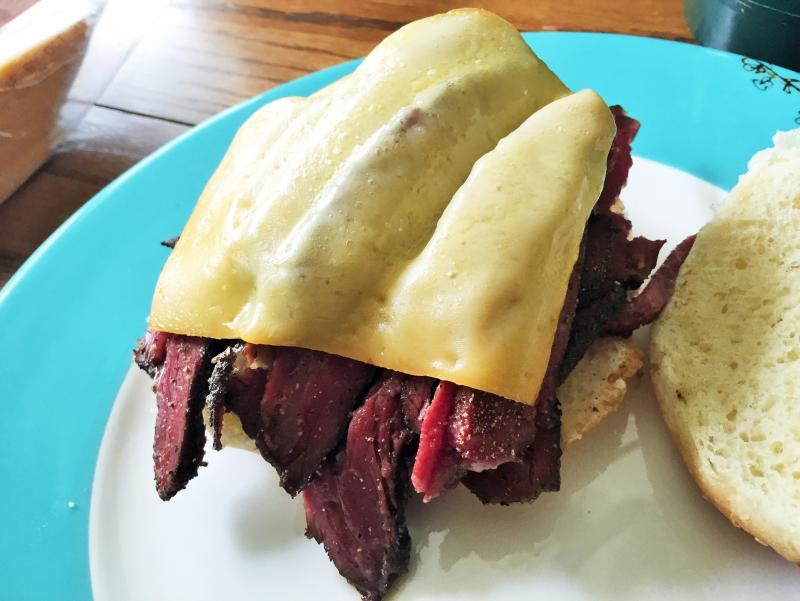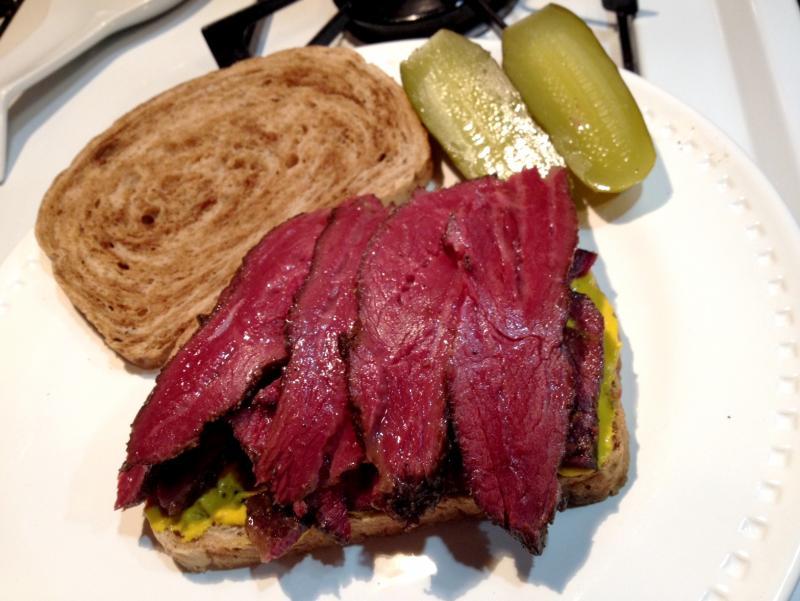-
Posts
1,807 -
Joined
-
Last visited
Content Type
Profiles
Forums
Store
Help Articles
Everything posted by btbyrd
-
-
-
Pink shrimp and Rancho Gordo midnight black beans. I don't know why the lighting looks all Instagram in the second picture, but whatever.
- 591 replies
-
- 11
-

-
Haven't tried the flat side yet for steak, but they do a bang-up job on shrimp.
-
Cooking in hay is an old technique. (Or techniques, really, since you can use it multiple ways) Stable to Table Dining. Hitting the Hay Fergus Henderson's Ham in Hay Heston Blumenthal's Hay Smoked Mackerel Heston also uses that technique to smoke fish for pies. The technique starts at about 12:40 in this video: https://www.youtube.com/watch?v=UULOU7bOICs
-
I can get the grates up over 800F if I run my Weber wide open and that's still not hot enough to get significant browning between grate marks (unless you overcook everything and let the grill marks totally carbonize). I'm going to flip two of my GrillGrates over so I have a dedicated plancha portion of the grill and see how that works. The advantage of using the Searzall over the plancha (at least for steaks) is that a plancha heats primarily by conduction while the Searzall does not. You can develop a serious crust with the Searzall yet leave the interior basically untouched by the extra heat. If you sear hard on a plancha, you have to be much more careful with the heat because the heat at the exterior is constantly being conducted/diffused through the meat. The plancha surface may be well-suited for "the Heston method" of turning the meat every 10-15 seconds.
-
Ice/gelatin filtration works pretty well, but it takes a while and the yield isn't awesome. If you try that technique, be sure to make the stock with bones and cuts that have lots of connective tissue so you can extract enough gelatin for the technique to work. I'm a fan of the ChefSteps consomme strategy which employs a Methocel/protein raft to clarify.
-
Maybe the only thing I haven't loved about GrillGrates is using them for steaks and chops. They are absolutely wonderful for pretty much everything else I grill -- chicken, fish, burgers, sausage -- but they're not good at developing a nice crust. Beautiful grill marks, yes. But with gray meat in between. It tastes great, but the texture and the deep Maillard flavors aren't there. But last night I figured out a nice workaround: the Searzall. It may seem silly (and it may be silly) to use a blowtorch on a piece of meat while it's grilling, but the results speak for themselves. You can get a proper crust and awesome sear marks without overcooking the interior.
-
That's how I do mine too. If they're really big, I'll freeze them, fry them for 1 minute, freeze them again, cook SV, and then fry again before serving. But that's only for gigantor King Kong style meatballs.
-
I would have thought that vanilla extract which included artificial flavoring as an ingredient (and indeed, more artificial flavoring than vanilla) couldn't be labeled "Pure Vanilla Extract."
-
I frequently combine smoking and SV. I was first turned onto the technique by ChefSteps' baby back rib recipe, which I've gotten very good results from. One of my ribs: The things I SV/smoke regularly tend to be ribs (beef and pork) and pork belly. I haven't tried sausages yet, but I plan to. I've done pork shoulder a few times but have found that the texture ends up being much too mushy compared to what you get by smoking conventionally at 225F (and cooking until the core gets up over 200F). The SV version will pull nicely and it'll taste great, but I like a range of textures in my pulled pork -- crunchy edges, somewhat stringy extremities, and juicy soft bits from the middle. Here's some SV pulled pork: The pre/post SV smoke debate depends on the flavor profile that you're going for. If you smoke beforehand, the intensity of the smoke will diminish in the bath, but the flavors themselves will continue to develop and you'll get a significant color change. Smoke particles are smaller than the pores in SV bags, so the water in your bath will end up taking on a smoke smell (and probably turn brown) if you cook for a long time. But the smoke flavor that you end up with will be more complex and subtle than if you just smoked after the SV step. This photo shows the color difference between smoked and unsmoked pork belly cooked SV for 48 hours. The smoked version was cold smoked at 35F for four hours. Prior to going in the bag, there was a subtle color difference between the two versions, but after cooking the difference was much more apparent: Since I am a lover of smoke, my favorite order of operations is "cold smoke -> SV -> chill -> reheat on smoker". This gives you the depth of flavor that comes from the pre-SV smoke step but also freshens up the smoke notes at the end so it has more of that "fresh campfire" aroma/flavor to it. As others have mentioned, Modernist Cuisine has a nice discussion of smoking and sous vide. ChefSteps also has a number of recipes that combine these techniques, as well as a dedicated barbecue class that might be worth your time. Check out this page for their overview of combining smoke and SV.
-
Beef cheek pastrami sandwich with smoked gouda. Until today, I really wasn't pleased with the beef cheek pastrami recipe in Modernist Cuisine, which calls for bagging the cheeks with their brine after you've smoked them. This step seems totally unnecessary (and ChefSteps doesn't list it in their updated Short Rib recipe, which is otherwise the same) and it absolutely ruins the spice rub and crusty exterior. It ends up mushy and without enough of a spicy bite. After two sad cheek sandwiches, I decided to try rubbing the finished cheeks with some excess rub and searing them hard on a screaming hot grill (with some wood pellets on there too to add a final bit of smoke). I really, really wanted a decent crusty exterior, so when they were almost done I hit them hard with the Searzall. Bingo, bango, bongo... THAT'S WHAT I'M TALKIN' ABOUT! Giant improvement... it made the final product actually worth the trouble of the recipe. Just when I thought I might never make these again, I'm starting to think about another batch.
-
D'Artagnan is D'Artagnan no matter where you get it. If you were buying it off the back of an unrefrigerated truck, that'd be one thing... but since you're getting it from a reputable source I wouldn't have any reservations.
-
D'Artagnan is one of the top US producers of foie gras and duck with a strong reputation for quality. Is your question about D'Artagnan as such or just getting it from Costco? In either case, you shouldn't have any worries. My local market sells both the breasts and the confit legs, and I've been pleased with both of them (as well as their foie, duck fat, and demi glace).
-
Mmm... Did you ever consider that people are agents capable of choosing their own values and exercising independent judgment?
-
Jim Gaffigan's standup is hilarious and most of it is about food. He recently came out with a book called "Food: A Love Story" that's quite funny. I listened to the audiobook on a recent car trip and it got a lot of laughs.
-
I'm with dcarch. This is mostly a cultural issue. The television industry is mostly concerned with giving people what they want, not giving them what is good. And what the people want is stupid, low-quality television with lots of flashy production. What happened to the Food Network isn't unique. Think about what happened to The Learning Channel, Bravo, A&E, or the Discovery Channel. Or the History Channel. Or MTV. Or the news media. People don't want high quality television from which they can learn and improve their lives. What they want is shows about people with dwarfism, hoarding disorders, or 19 kids. They want "Long Island Medium" and they want to keep up with Kardashians. They want shows about pawn shops with idiotic titles involving puns about pornography. They want Honey Boo Boo and shows about people who are hundreds of pounds overweight. They want Ancient Aliens and shows about swamp people. They want "Naked and Afraid" and "Intervention" and "16 and Pregnant." They want a 128oz Big Gulp with a gas station burrito and a side of Donkey Sauce. Guy Fieri is a symptom, not a cause. The cause is the American public and the networks who give them what they want.
-
AND it grates cheese!
-
Ugly, overpriced, high-maintenance, and liable to perform worse than knives costing a tenth of the price. But at least it's handcrafted in Brooklyn!
-
For serious baking in a restaurant setting, you will want a combi oven. I'd rather buy my bread from a quality local bakery than try to bake good bread in restaurant quantities without a combi. You will find other uses for it.
-
GrillGrates are actually quite light, given that they're made of aluminum. Given how sturdy most chimney starters are, I don't foresee a problem.
-
I have an A-maze-n tube smoker that works great for both hot and cold smoking. It's fantastic.
-
- 560 replies
-
- 10
-




